 |
|
HOME
|
US Navy -
ships
|
US Navy - air
units
|
USMC - air
units
|
International
Navies
|
Weapon Systems
|
Special Reports |
|
Surface Vessel Weapon System MBDA CAMM / CAMM-MR / CAMM-ER Missile (Royal Navy Sea Ceptor System) |
 CAMM-ER and CAMM |
| 03/25 |
|
The CAMM (Common Anti-Air Modular Missile) is a family of
surface-to-air missiles developed by MBDA UK for the United Kingdom.
CAMM is derived from, and shares some common features and components
with, the Advanced Short-Range Air-to-Air Missile (ASRAAM), but with
updated electronics, a soft vertical launch system, and an active
radar homing seeker. The CAMM family is in use by or on order for
the armed forces of several countries. In the Royal Navy, CAMM, the point and local area defence variant with a range of greater than 25 kilometres (16 mi), is part of the Sea Ceptor air defence system which replaced the Sea Wolf missiles on Type 23 frigates starting from 2018. It will also equip both the Type 26 and Type 31 frigates planned for 2028, and is intended to replace Aster 15 on the Type 45 destroyer. In the British Army, CAMM forms the interceptor component of the Sky Sabre/Land Ceptor air defence system, which replaced the Rapier missile from 2021. The development of CAMM is also contributing to the updating of ASRAAM in service with the Royal Air Force. An extended-range version of the CAMM (CAMM-ER) was in the final stages of development by the UK and Italy as of 2023. It is capable of reaching targets over 45 kilometres (28 mi) away. Brazil announced in 2014 that it was independently to develop the similar 40 kilometres (25 mi)+ ranged MV-AMA (AVibras Medium Altitude Missile) for its Astros 2020 MLRS and naval platforms. A larger CAMM-MR (medium-range) missile with a range of over 100 kilometres (62 mi) was being developed by the UK and Poland in 2022, to equip Polish Wicher-class frigates and Wisła air defence systems. Characteristics: The main variants of the CAMM family utilise a number of common features. The missiles' guidance system uses a combination of two-way data link for in-flight guidance and retargeting, and an active RF seeker, using gallium nitride (GaN) solid-state power amplifier technology, for terminal guidance (lock-on after launch) providing high performance in all weather conditions. As missiles can receive guidance inputs over data link, targeting data through to the missile's terminal phase can be provided by the fire-control channel(s) present on modern 3D radar systems, removing any requirement for a ship or ground-based air-defence system (GBAD) to incorporate dedicated fire-control or radar illuminator systems, helping to reduce system cost, weight, and maintenance requirements. This also allows the use of targeting data from a much greater variety of sources, for instance, if a ship's combat management system or a GBAD's command post is compatible with wider battlefield data-link systems (e.g. NATO's Link 16) then connected assets including aircraft or other air defence systems can contribute targeting data. This guidance combination reportedly allows a high rate of fire against multiple simultaneous targets (saturation attacks) and against a "wide target set" with missiles also described as having a "modest" surface-to-surface capability. However, there are concerns that the increased use of data link may make the system more vulnerable to electronic warfare measures. CAMM also incorporates a cold launch system referred to as Soft Vertical Launch (SVL). Unlike the more traditional hot launch method whereby a missile would use its own rocket motor to leave its launch cell, SVL uses a gas generator to pneumatically eject the missile from its canister while a turn-over pack on the missile body orients the missile directly towards the target before engaging its rocket motor and accelerating for interception. Whilst still providing 360° coverage around the launch system, the unique benefits of this launch method include: - Increased maximum interception range by saving all the rocket motor's energy to power the intercept. - Reduced minimum intercept range by reducing the turn-over arc required of the missile after launch which would otherwise bleed valuable energy (reportedly saving 30% of launch weight). - Reduced stress on launch platforms and the removal of most efflux management concerns which allows for both reduced launcher maintenance, lighter and more compact launcher options, and greater freedom of launching locations, for instance, the increased feasibility of firing the missiles from wooded or urban areas. - Reduced risks from missile malfunction as there is little risk of the missile being stuck in the launcher with a burning rocket motor and damage the launcher and surrounding missiles. - Reduced launch signature (visual / infrared) for better launch platform concealment (also potentially enables the physical camouflaging of the launcher) and reduced sensor obstruction post-firing. The CAMM family are described as having a maintenance-free design throughout the missile's shelf life of reportedly 10 or 20 years, with munitions remaining safely sealed in their launch canisters until firing. CAMM's software utilises open-systems architecture allowing for both easier integration with new sensors and combat management systems but also general upgrades throughout its service life. Additionally, all CAMM munitions are rated as Insensitive munition compliant for improved platform survivability in the event of damage. The missiles of the CAMM family can be used interchangeably by both naval and ground-based air defence systems allowing for common usage and shared munition stockpiles between military branches. Ground-based air defence (Land Ceptor): The land application of CAMM is marketed as the "Enhanced Modular Air Defence Solutions" (EMADS) package or "Land Ceptor". The system utilises MBDA's Intelligent Launcher (iLauncher), a scalable, palletised erector launcher for up to eight CAMM or CAMM-ER missiles and mounted to an 8x8 vehicle of choice. iLauncher provides the two-way data link for the missiles in-flight and can also optionally integrate an electro-optical targeting system for passive target acquisition within line of sight of the launcher. Additionally, iLauncher is capable of self-loading/unloading missile racks via a hook system or change individual missile canisters with the assistance of a crane (This reportedly allows for missiles to be loaded in half the time as required for Rapier). It is also fitted with its own power supply allowing it to be dismounted from the parent vehicle and operated remotely if necessary, as well as mounting onboard test-equipment for streamlined maintenance. iLauncher has evolved considerably from its initial concept in the early 2010s. The first iterations of the system were seen mounted on MAN 4x4 trucks, loaded with two racks of six missiles (12 missiles total), a small crane, an early version of the data link mast and considerably fewer auxiliary components compared to the final product. As part of EMADS, CAMM and iLauncher are designed to be integrated with a customer's choice of command and radar systems, as well as wider battlespace management systems such as Northrop Grumman's Integrated Air and Missile Defence (IAMD) Battle Command System (IBCS). Additionally, by using data link, the various component systems of EMADS (launchers, sensors, command systems) do not required physical connectors such as cables to be established between them, allowing a battery or fire-group to deploy and redeploy more rapidly but also allowing for components to be spaced apart out to a reported distance of 15 kilometres (9.3 mi) for improved survivability. Naval-based air defence (Sea Ceptor): The naval application of CAMM is marketed as "Sea Ceptor". CAMM can be integrated on vessels as small as 50 metres (160 ft) such as in/offshore patrol vessels or on larger surface combatants (destroyers and frigates), only requiring the internal installation of the necessary computing systems as well as above-deck aerials for the two-way data link for the missiles, and is designed to be easily integrated with a ship's combat management system. CAMM's soft vertical launch capability with the resultant removal of most efflux management concerns aboard ships enables the use of a variety of shipborne launching options. The low cost, low weight, option is CAMM's own vertical launch canisters (colloquially known as "mushroom farms" due to the appearance of the protective cover used to protect the protruding cells when not in combat) which use a lengthened and modified version of the vertical launch cells used on the Type 23 frigates. A more modular version of this launcher arrangement was later developed, utilising six-cell launch modules. Alternately, following integration with the Host Extensible Launching System (ExLS), CAMM, CAMM-ER and CAMM-MR can be packed into the larger multi-role Mark 41 or Mark 57 vertical launching systems, providing a launching system which is much more compact and with greater missile capacity (multiple missiles can be packed into each individual launch cell), though heavier and more expensive. The French Sylver vertical launching system can also be used. The ExLS product line also has a stand-alone three-cell launch module that can provide tactical-length launch capabilities comparable to the Mark 41, but in a lighter and smaller package, as a middle-ground launcher option for CAMM and CAMM-ER. Variants: CAMM The point defence and local-area defence variant. CAMM weighs 99 kg (218 lb), is 3.2 m (10 ft 6 in) in length, and is 166 mm (6.5 in) in diameter. Incorporating the same rocket motor from ASRAAM, CAMM has a flight altitude of 10 km (6.2 mi) and reported minimum operational range of less than 1 kilometre (0.62 mi) and a maximum range greater than 25 km (16 mi), although IHS Jane's reported that trials had shown the missile having a capability of traveling up to 60 km (37 mi). These ranges are significantly greater than both the 1-10 kilometres (0.62-6.21 mi) range of Sea Wolf and the 8.2 kilometres (5.1 mi) range of Rapier that CAMM would replace. Can be quad-packed. CAMM-ER The extended-range point and local-area defence variant. Under development with MBDA and Avio for the Italian Ministry of Defence since 2013. CAMM-ER weighs 160 kg (350 lb), is 4.2 metres (14 feet) in length, and is 190 mm (7.5 in) diameter. Other than the increased dimensions and alongside the addition of strakes and fins to the body as well as a slightly redesigned seeker radome, CAMM-ER utilises a new Avio rocket motor enabling a range in excess of 40-45 kilometres (25-28 mi), although these ranges are reported as conservative, and a flight altitude of 10 km (6.2 mi). Can be quad-packed. CAMM-MR (Medium-Range) An area defence variant with a range in excess of 100 kilometres (62 mi) being developed in partnership between MBDA UK and PGZ as of 2023 as part of the wider 2030 UK-Poland Strategic Partnership. The missile is being primarily developed for Polish requirements as a lower-cost, locally producible missile to complement the existing PAC-3 MSE within the Wisła system, as well as to have a single medium-range missile that can be used by both ground based air defence assets and the Polish Navy's Wicher-class frigates. Whilst there is currently little information on the missile's overall characteristics aside range, official images of the munition shows two missiles loaded into a single Mark 41 VLS cell making CAMM-MR the first munition of this range class capable of being dual-packed into the Mark 41 Vertical Launching System, enabling 16 missiles to be carried by a single Mk.41 eight-cell launch module. Specifications: CAMM Diameter: 166 mm (6.5 in) Wingspan: 450 mm (18 in) Length: 3.2 m (10 ft 6 in) Mass: 99 kg (218 lb) Operational Range: > 25 km (16 mi) Flight altitude: 10,000 m (33,000 ft) CAMM-ER Diameter: 190 mm (7.5 in) Wingspan: 450 mm (18 in) Length: 4.2 m (13 ft 9 in) Mass: 166 kg (366 lb) Operational Range: > 45 km (28 mi) Flight altitude: 10,000 m (33,000 ft) Common: Warhead: 10 kg (22 lb) high-explosive blast fragmentation warhead with laser proximity and impact fuze Engine: solid fuel rocket motor Speed: Mach 3 (1,029 m/s; 3,376 ft/s / 3,700 km/h) Guidance: Inertial guidance system with mid-course update and active radar terminal homing Manufacturer: MBDA sources: MBDA, wikipedia |
| images |
|
CAMM  CAMM  CAMM  CAMM  CAMM CAMM-ER  CAMM-ER  CAMM-ER 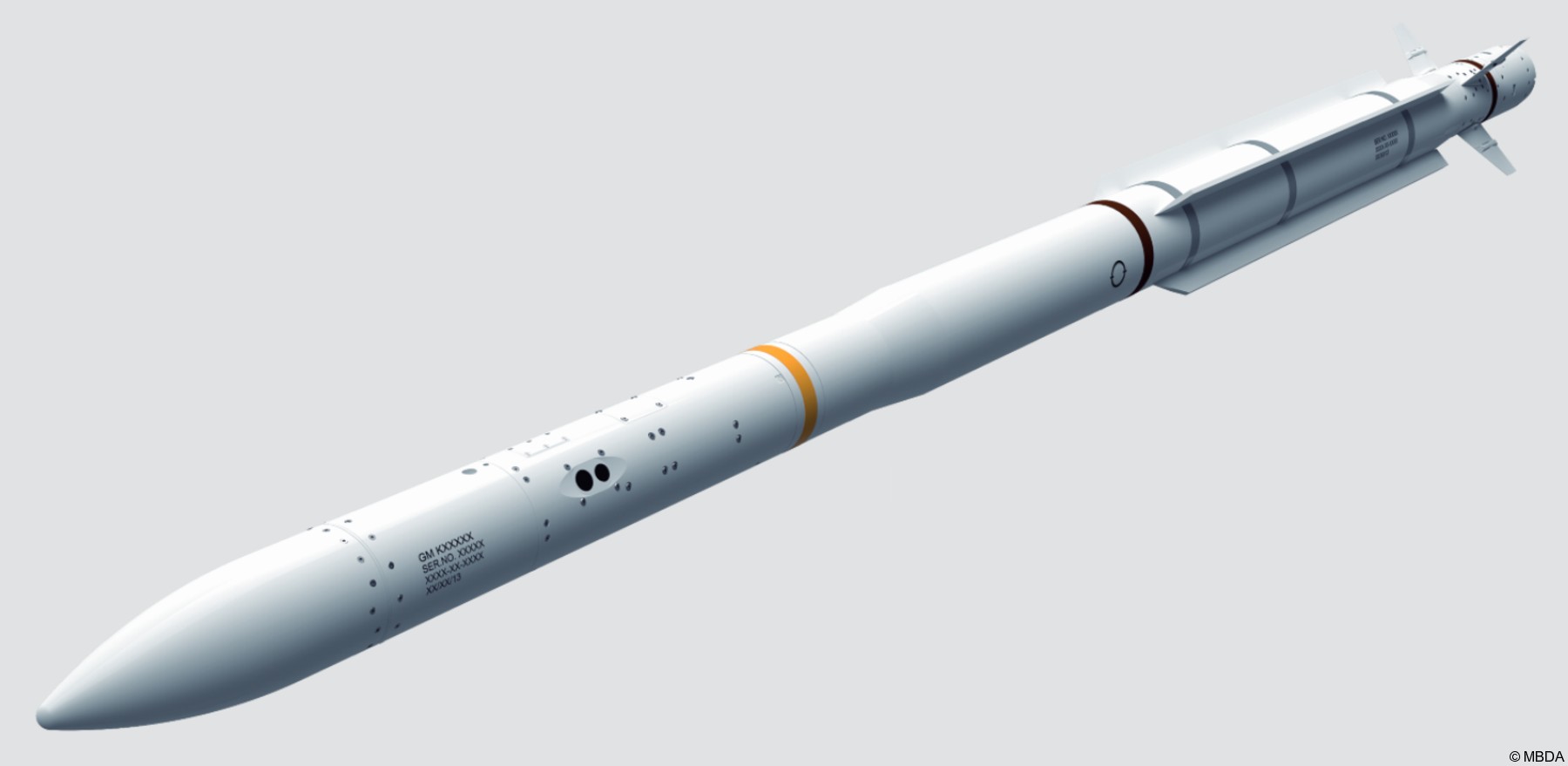 CAMM-ER  CAMM-ER 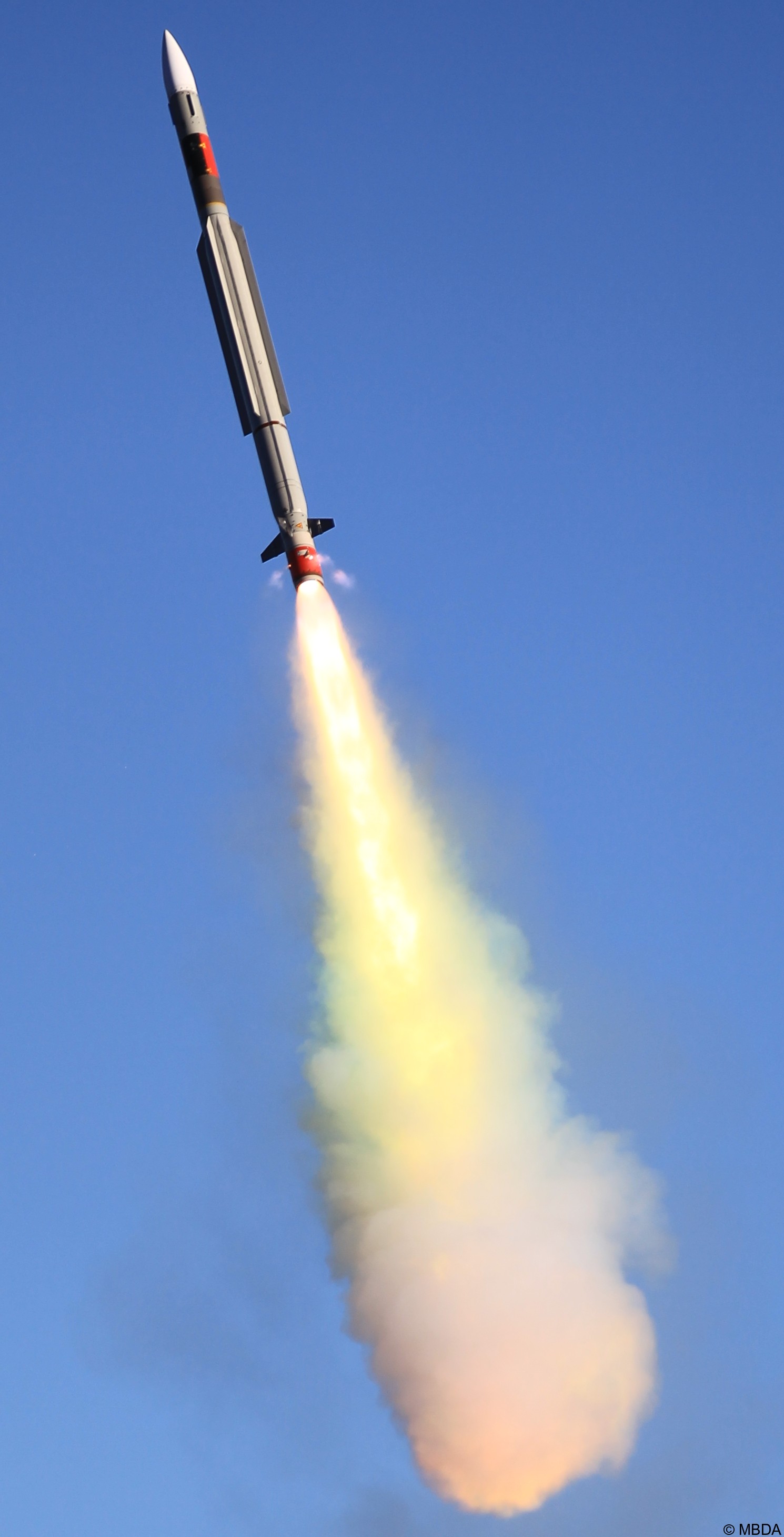
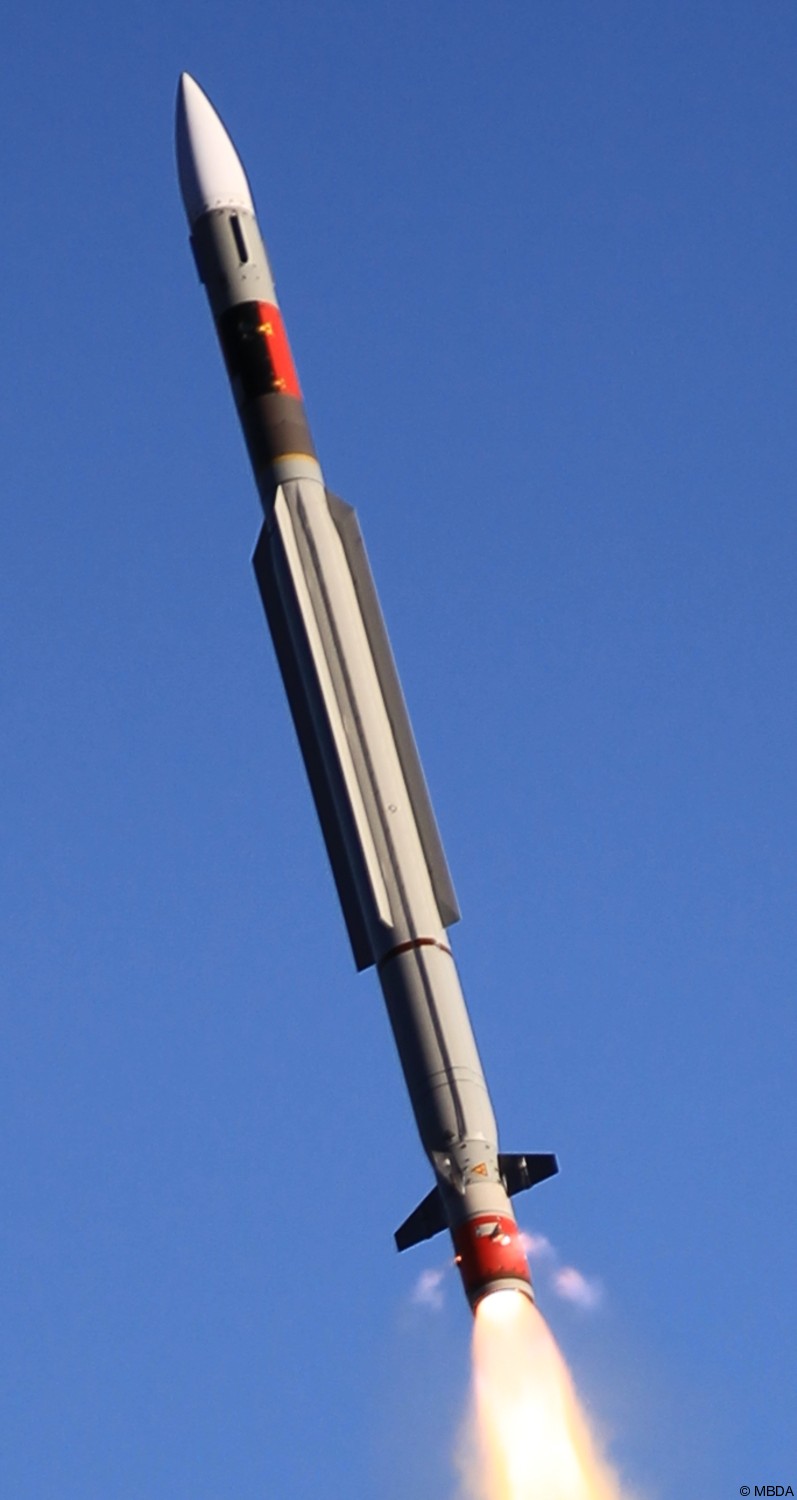 CAMM-ER 
 CAMM-ER and CAMM  CAMM-ER and CAMM Sea Ceptor / CAMM Naval Air Defence System 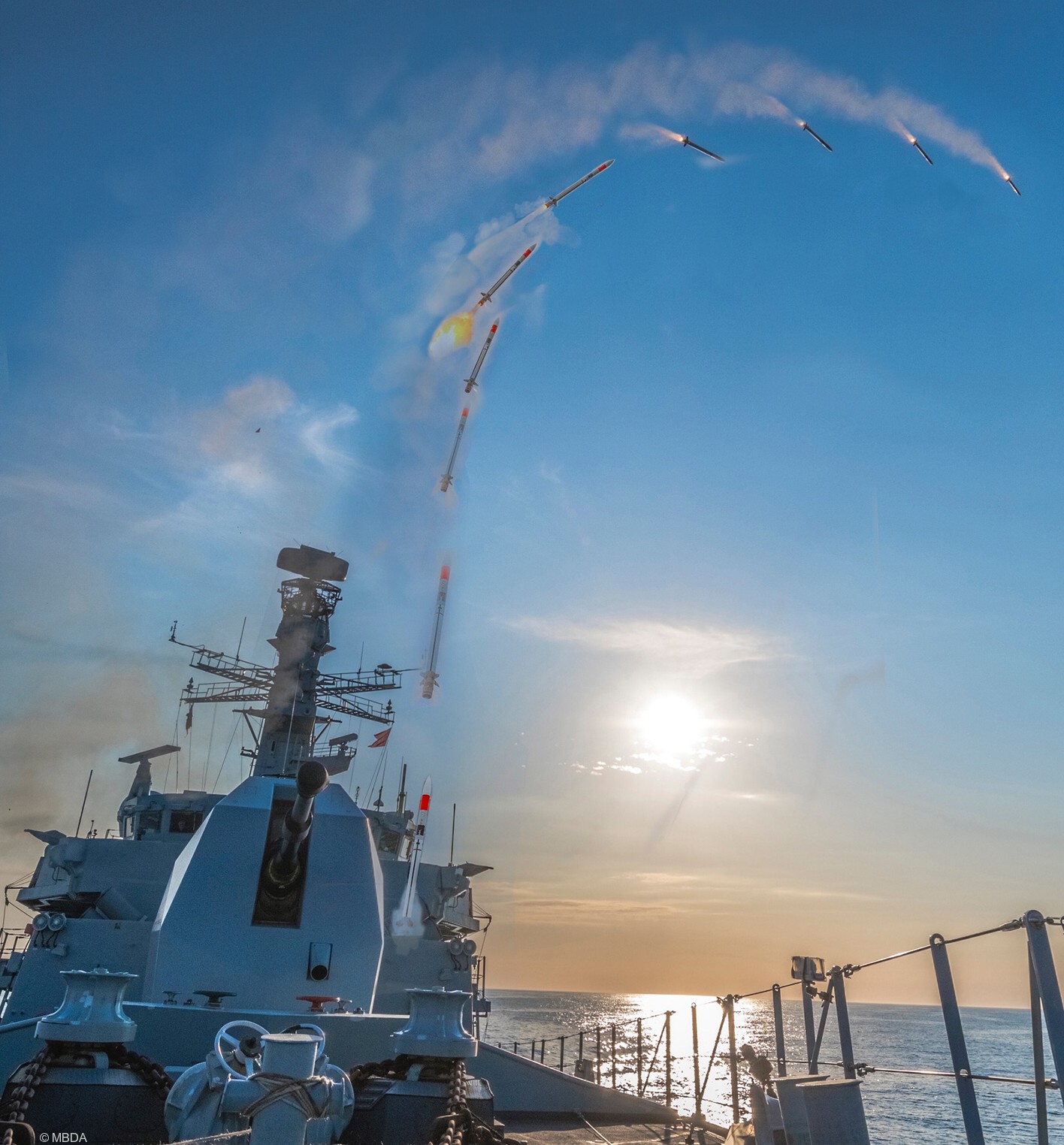 Sea Ceptor (modified GWS-26 32-cell Vertical Launching System / VLS) - for CAMM SAM's aboard a Royal Navy Type 23 / Duke class Frigate 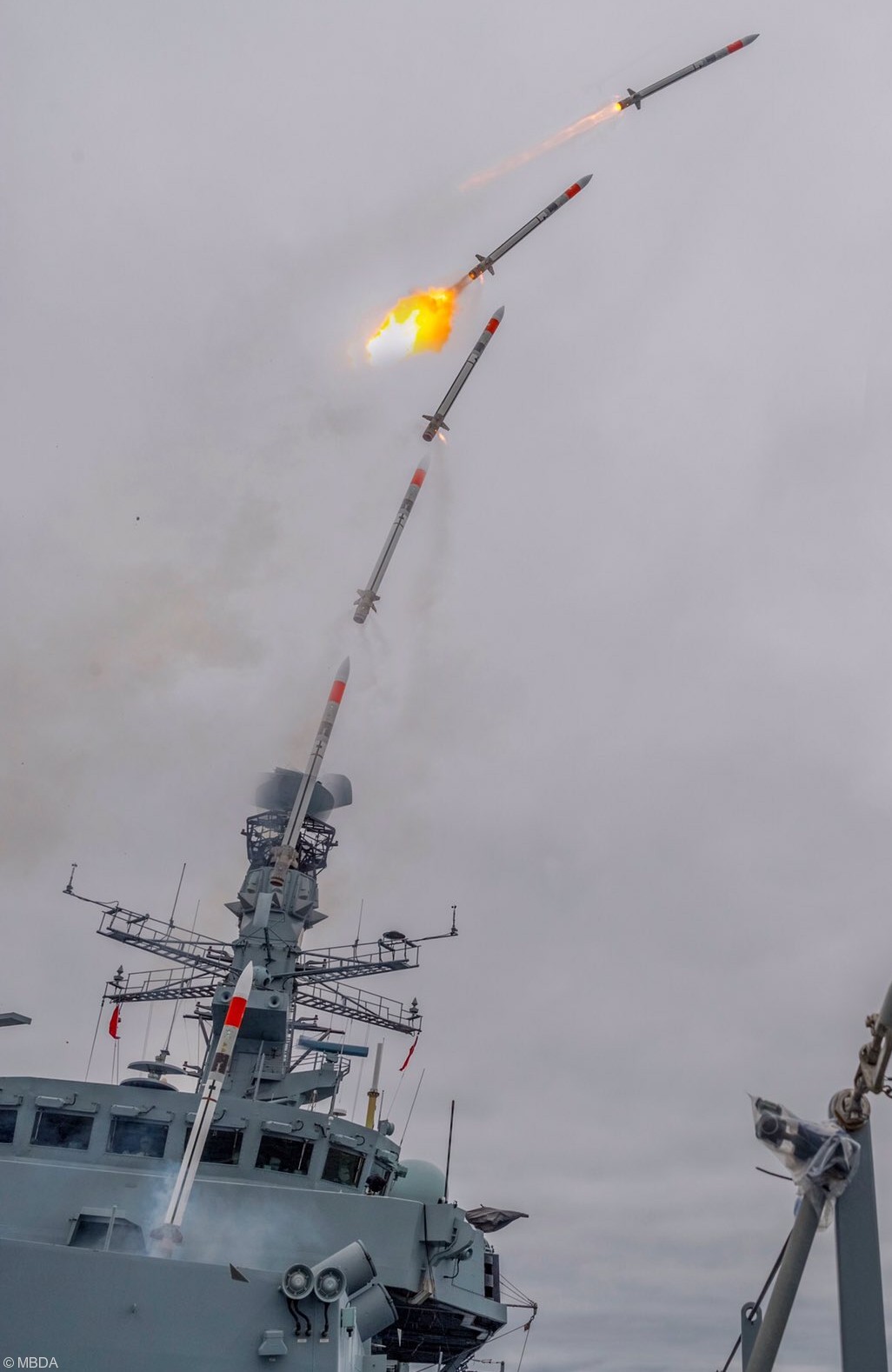 Sea Ceptor (modified GWS-26 32-cell Vertical Launching System / VLS) - for CAMM SAM's aboard a Royal Navy Type 23 / Duke class Frigate 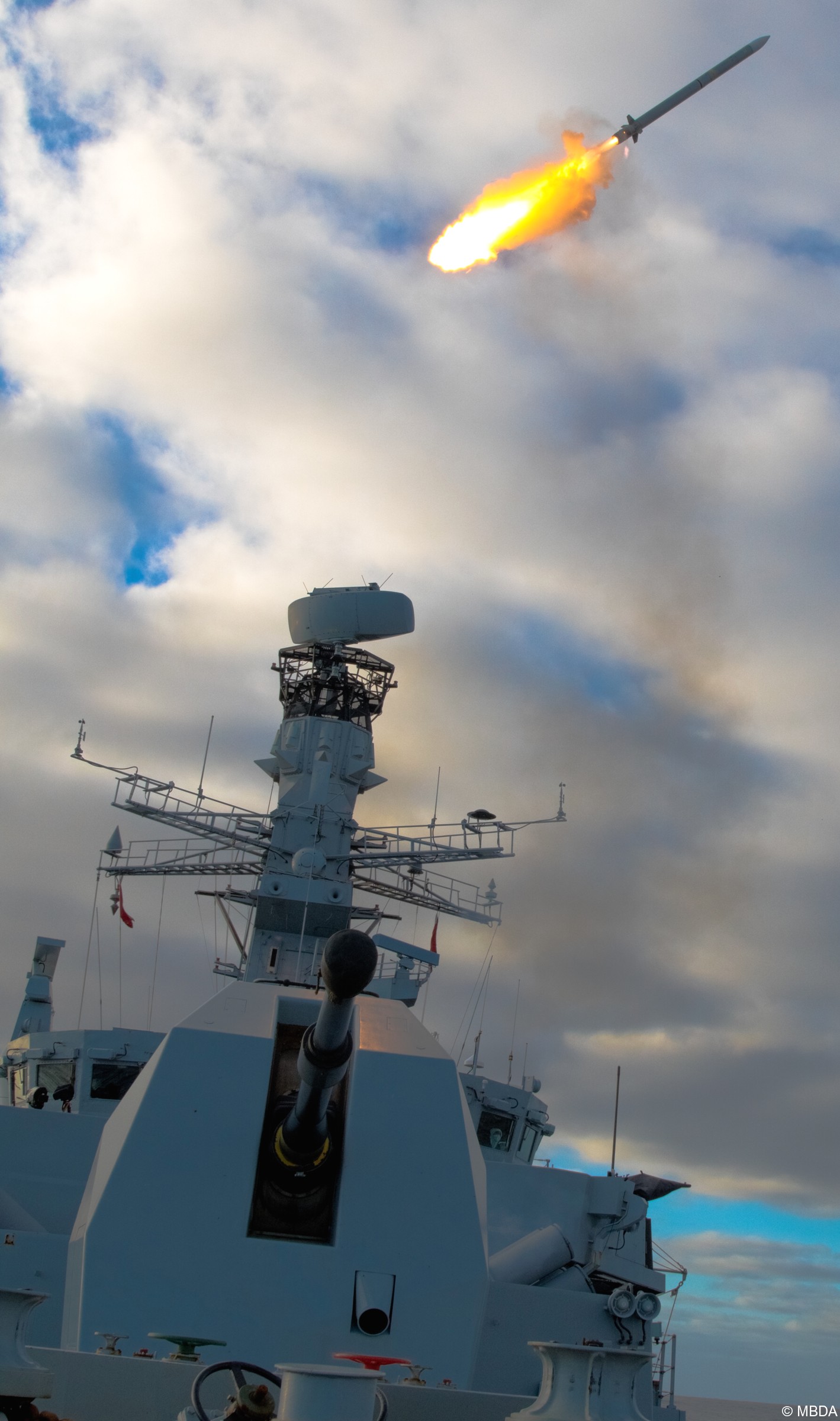 Sea Ceptor (modified GWS-26 32-cell Vertical Launching System / VLS) - for CAMM SAM's aboard a Royal Navy Type 23 / Duke class Frigate 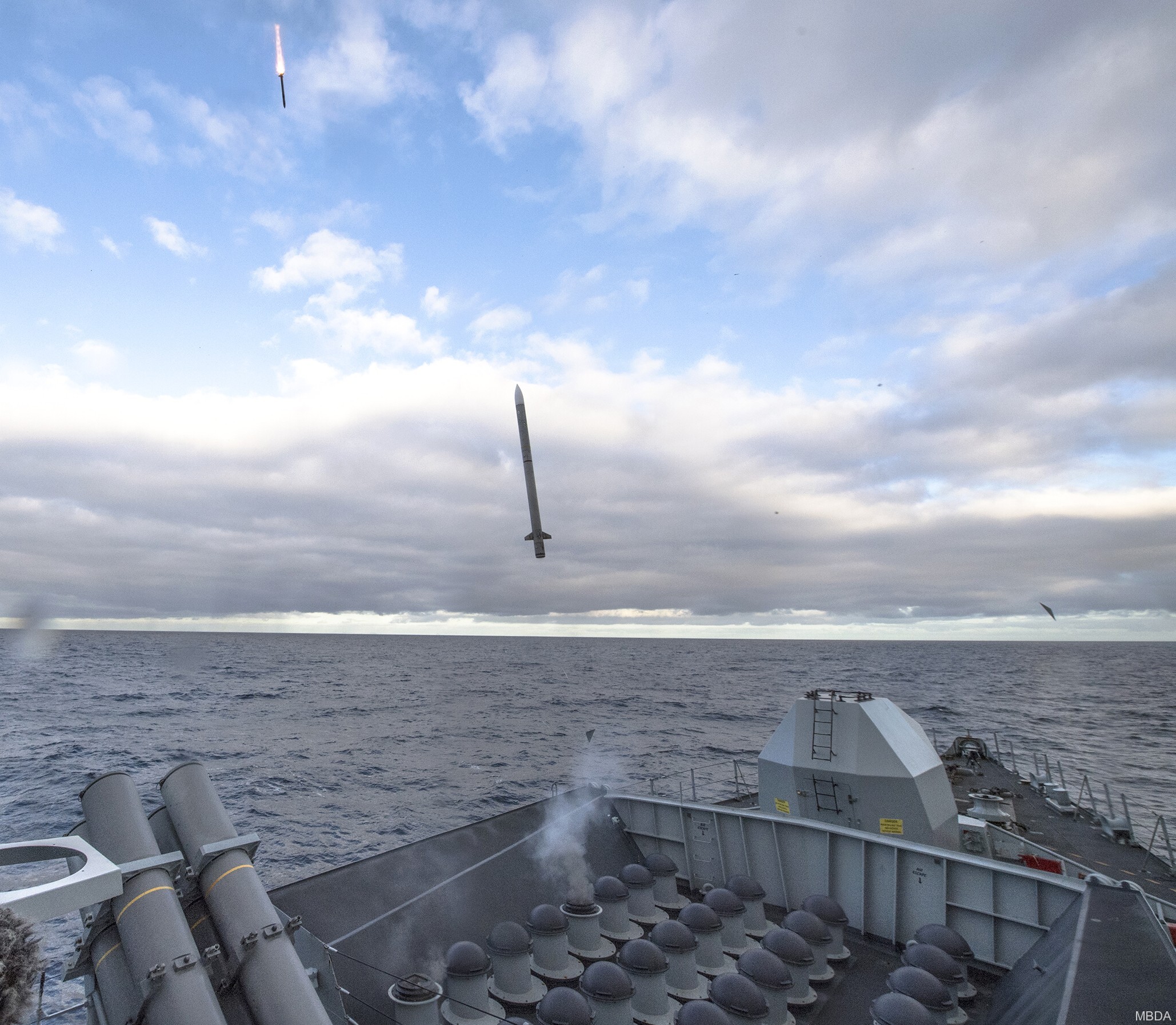 Sea Ceptor (modified GWS-26 32-cell Vertical Launching System / VLS) - for CAMM SAM's aboard a Royal Navy Type 23 / Duke class Frigate 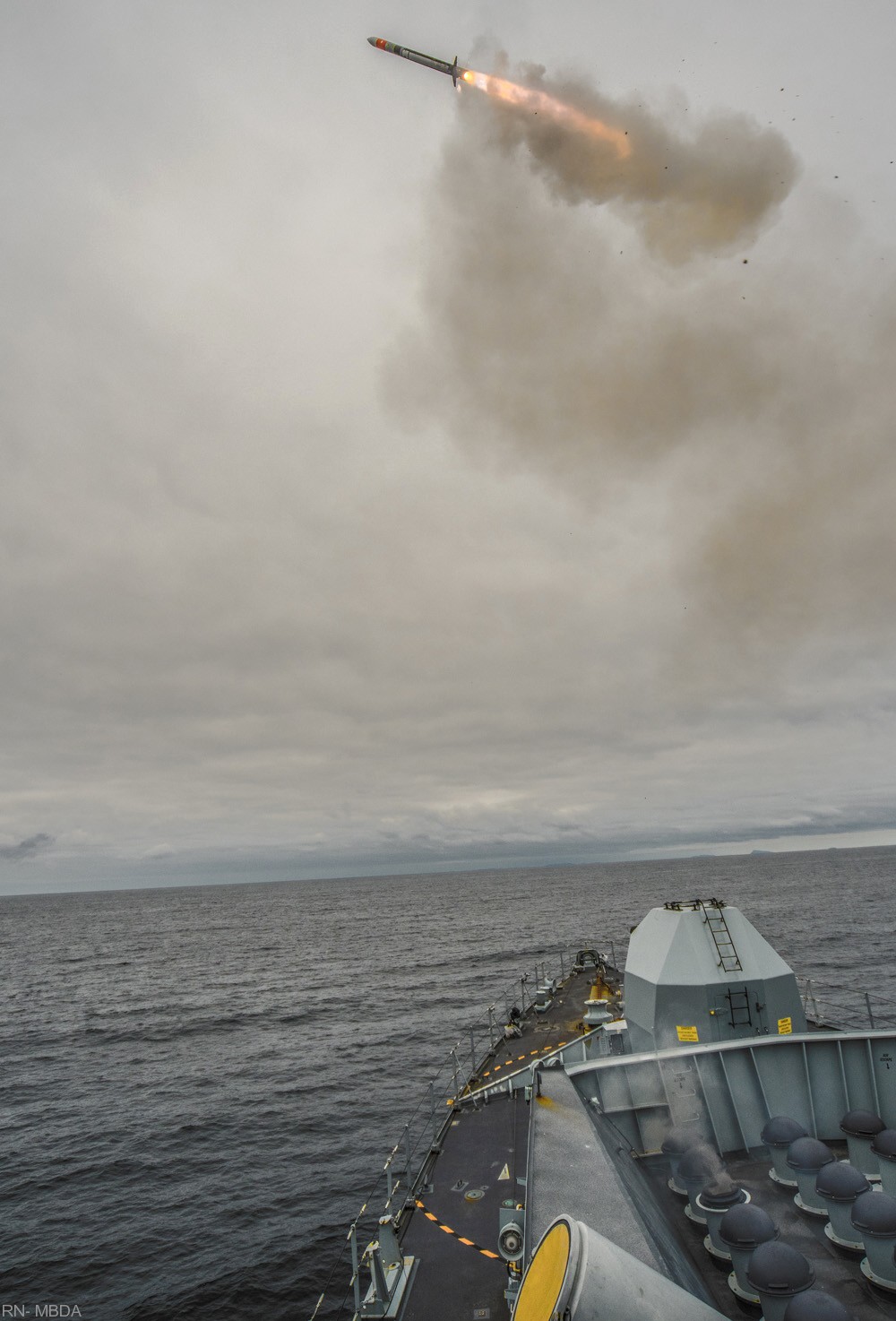 Sea Ceptor (modified GWS-26 32-cell Vertical Launching System / VLS) - for CAMM SAM's aboard a Royal Navy Type 23 / Duke class Frigate 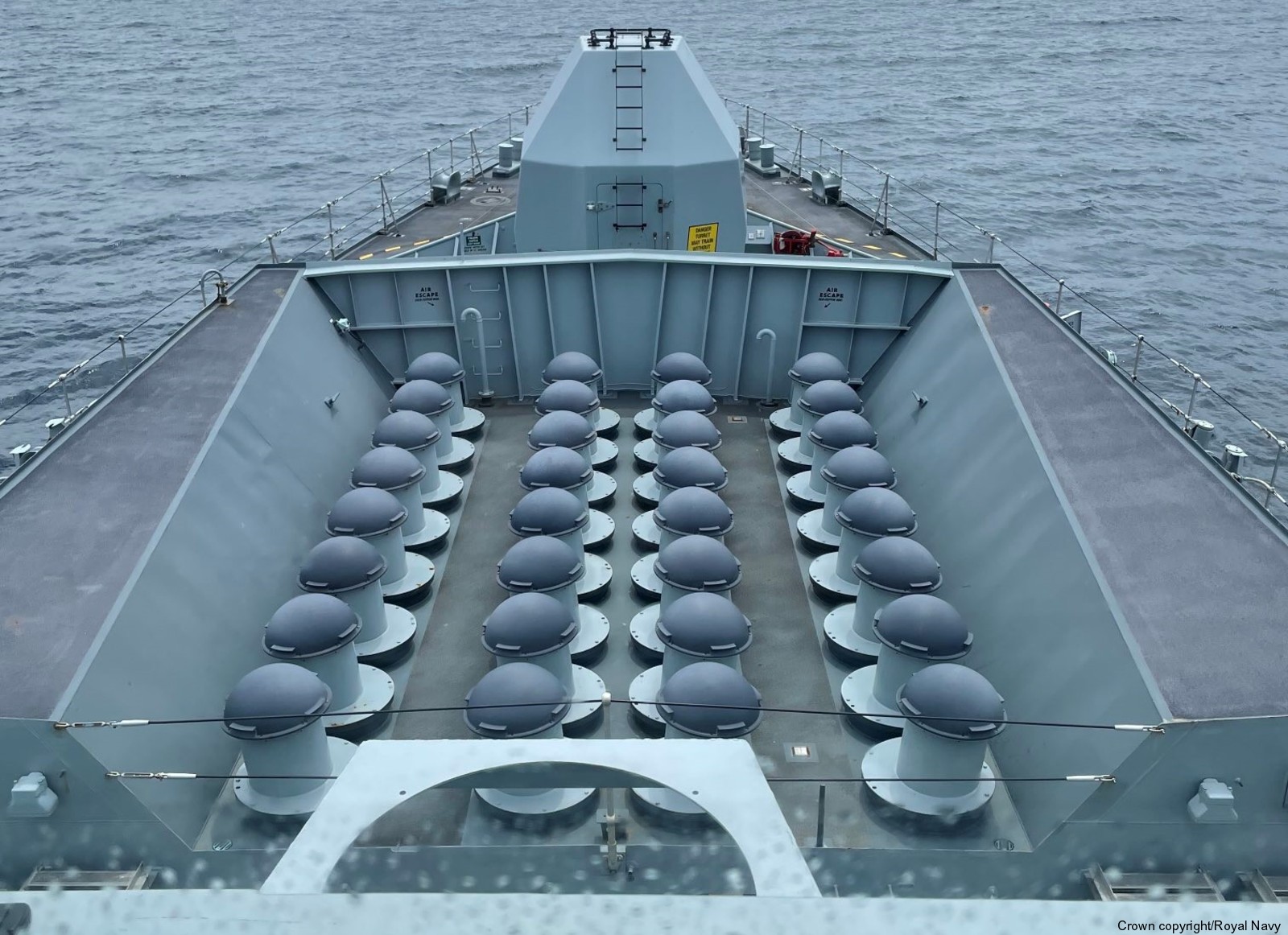 Sea Ceptor (modified GWS-26 32-cell Vertical Launching System / VLS) - for CAMM SAM's aboard a Royal Navy Type 23 / Duke class Frigate 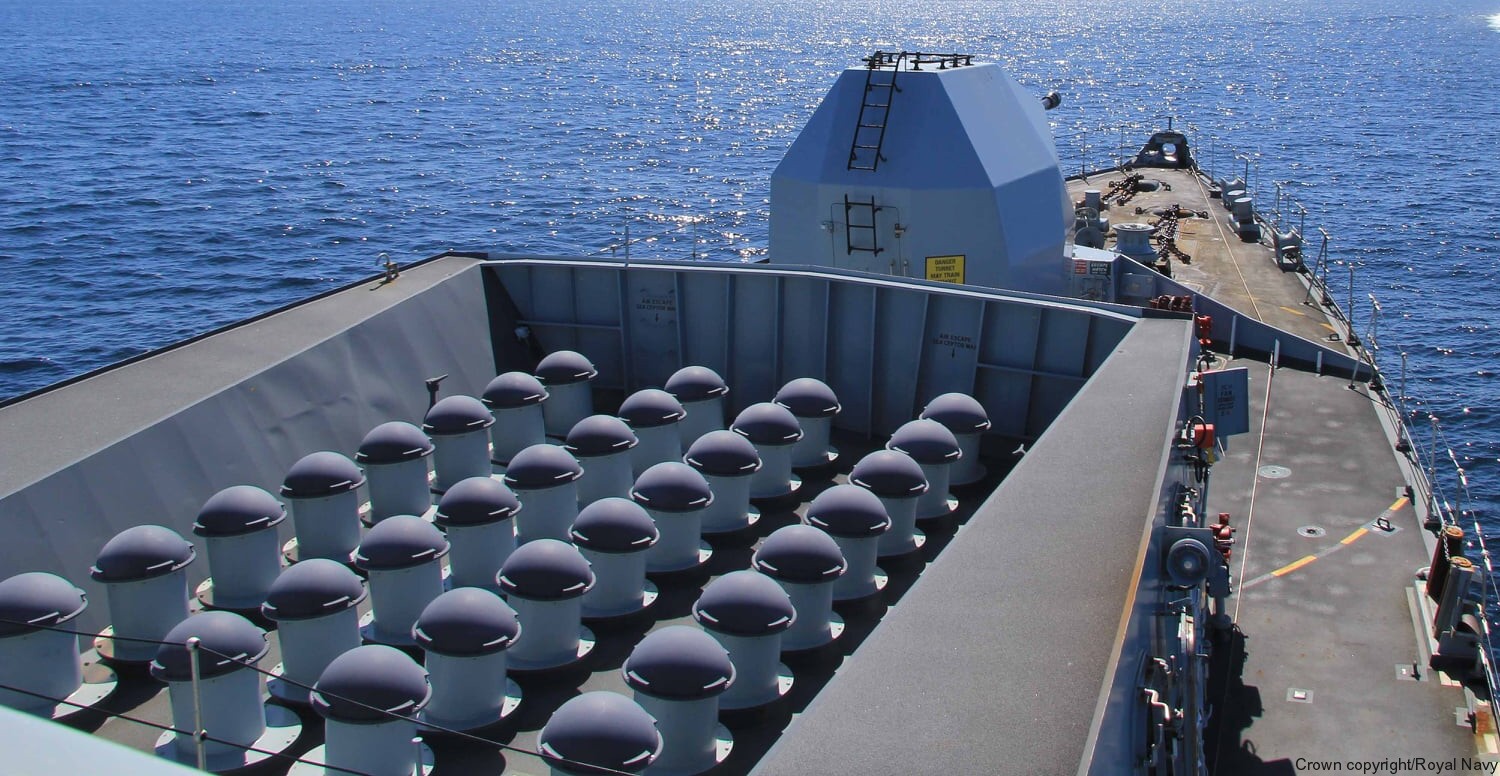 Sea Ceptor (modified GWS-26 32-cell Vertical Launching System / VLS) - for CAMM SAM's aboard a Royal Navy Type 23 / Duke class Frigate 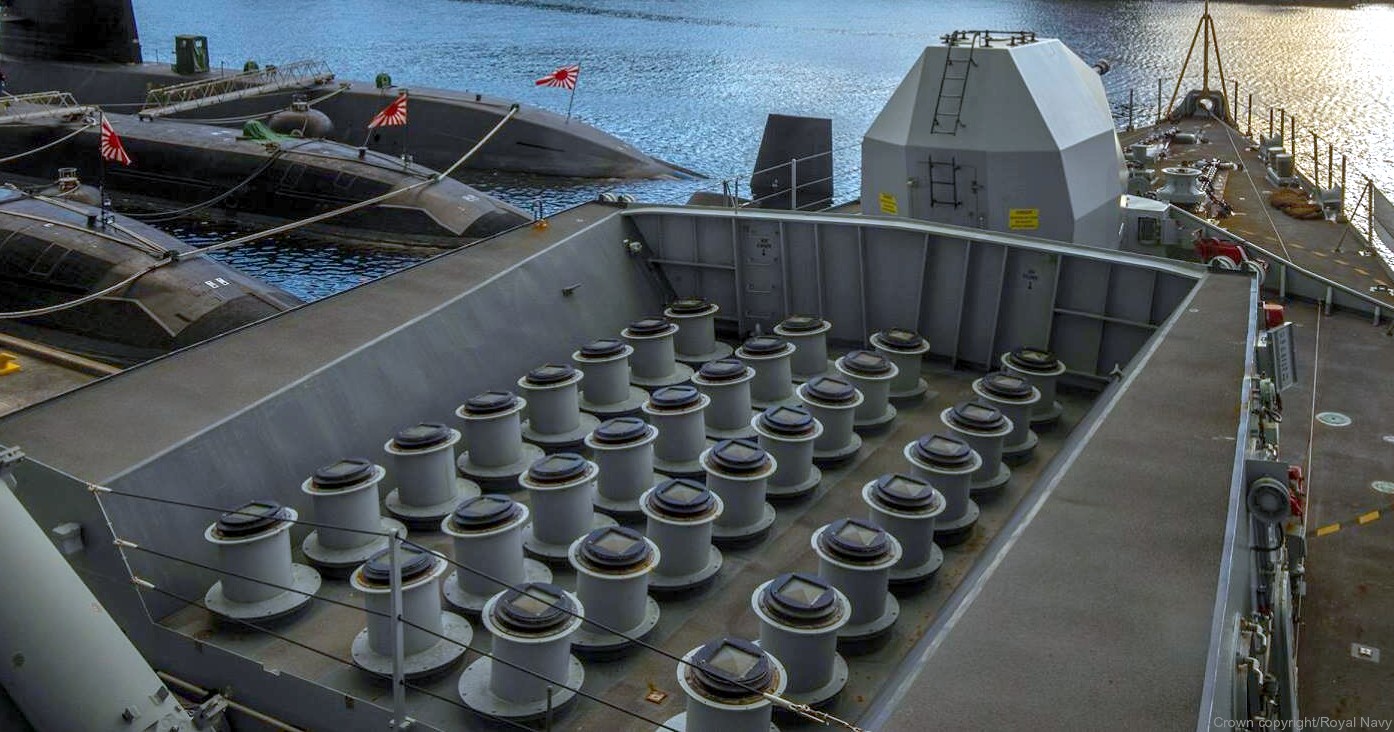 Sea Ceptor (modified GWS-26 32-cell Vertical Launching System / VLS) - for CAMM SAM's aboard a Royal Navy Type 23 / Duke class Frigate 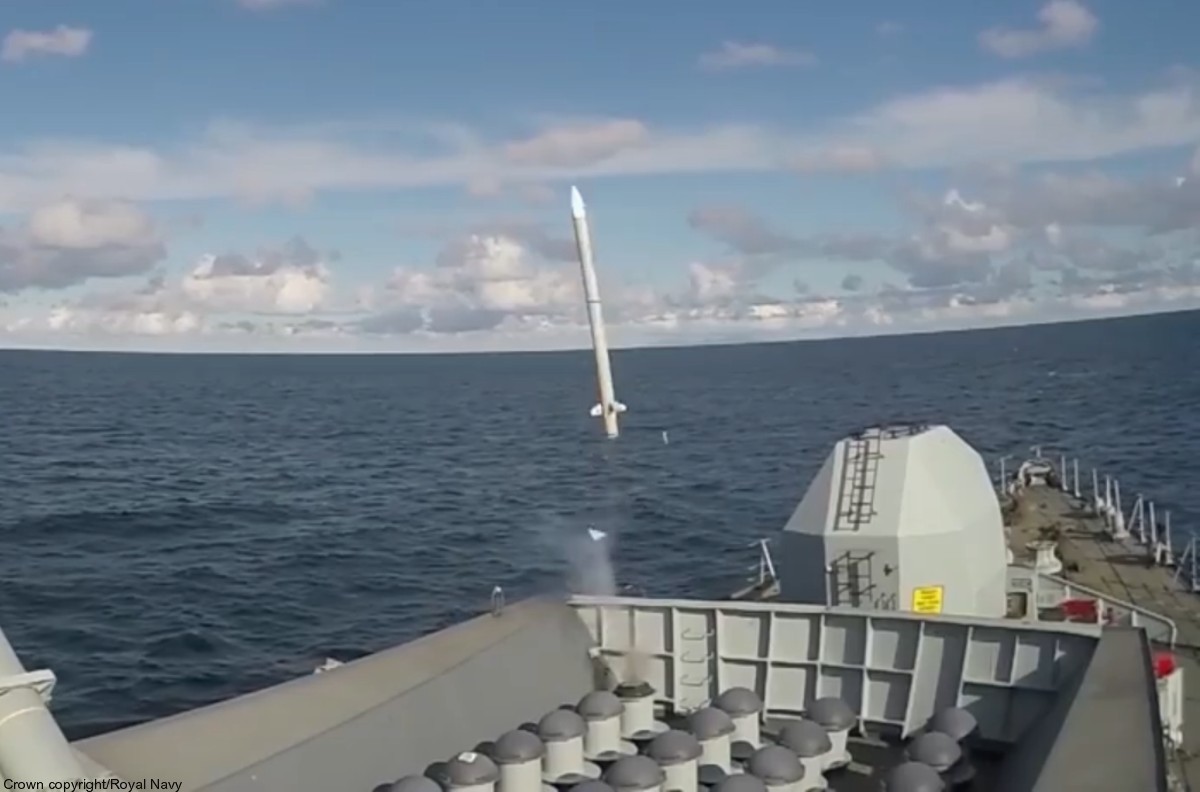 Sea Ceptor (modified GWS-26 32-cell Vertical Launching System / VLS) - for CAMM SAM's aboard a Royal Navy Type 23 / Duke class Frigate 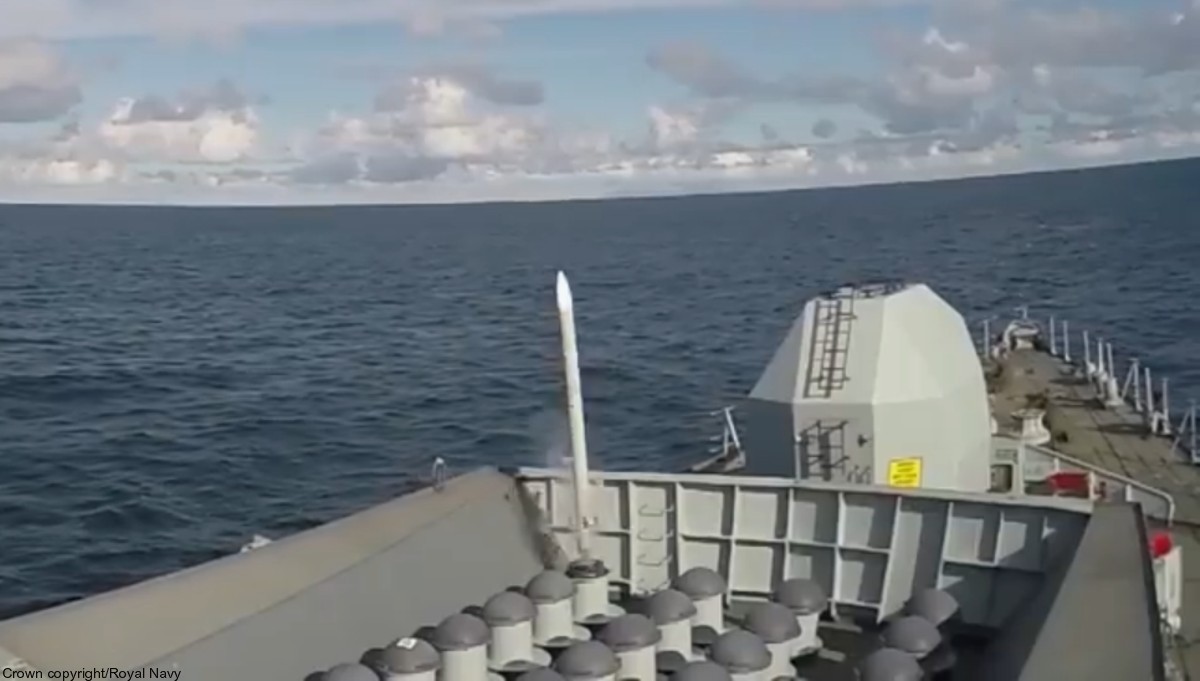 Sea Ceptor (modified GWS-26 32-cell Vertical Launching System / VLS) - for CAMM SAM's aboard a Royal Navy Type 23 / Duke class Frigate  Sea Ceptor (modified GWS-26 32-cell Vertical Launching System / VLS) - for CAMM SAM's aboard a Royal Navy Type 23 / Duke class Frigate 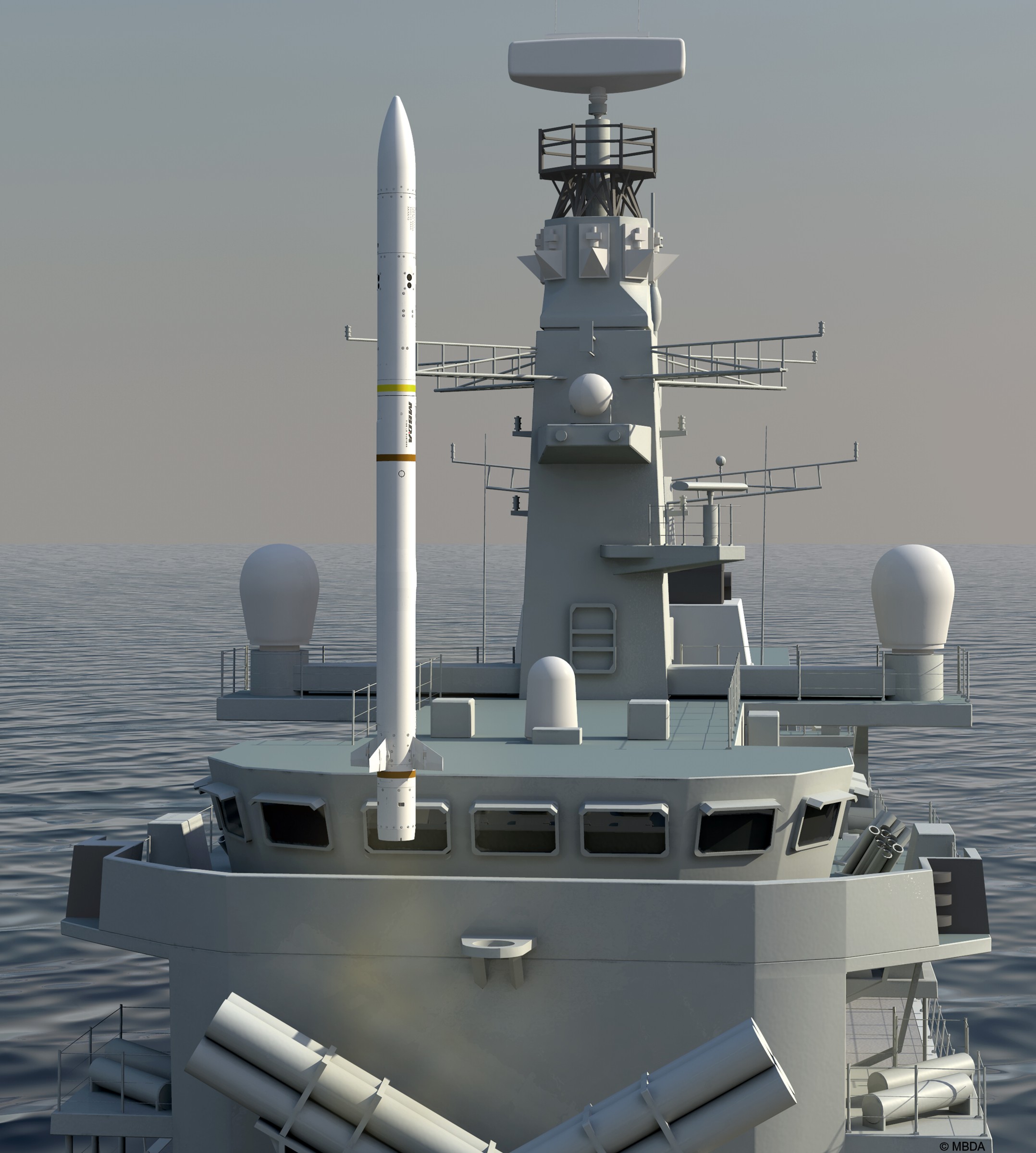 Sea Ceptor air defence system for CAMM SAM's aboard a Royal Navy Type 23 / Duke class Frigate  MBDA will supply the Royal Swedish Navy’s five Visby Class Corvettes with the Sea Ceptor / CAMM naval air defence system CAMM for Extensible Launching System (ExLS) / Mk.41 Vertical Launching System (VLS)  Extensible Launching System (ExLS) 3-Cell Stand Alone Launcher for quad-packed CAMM missiles ExLS is a low-cost alternative for integrating new missiles and munitions into naval surface combatants leveraging Lockheed Martin’s proven Mk.41 Vertical Launching System (VLS) design and electronics 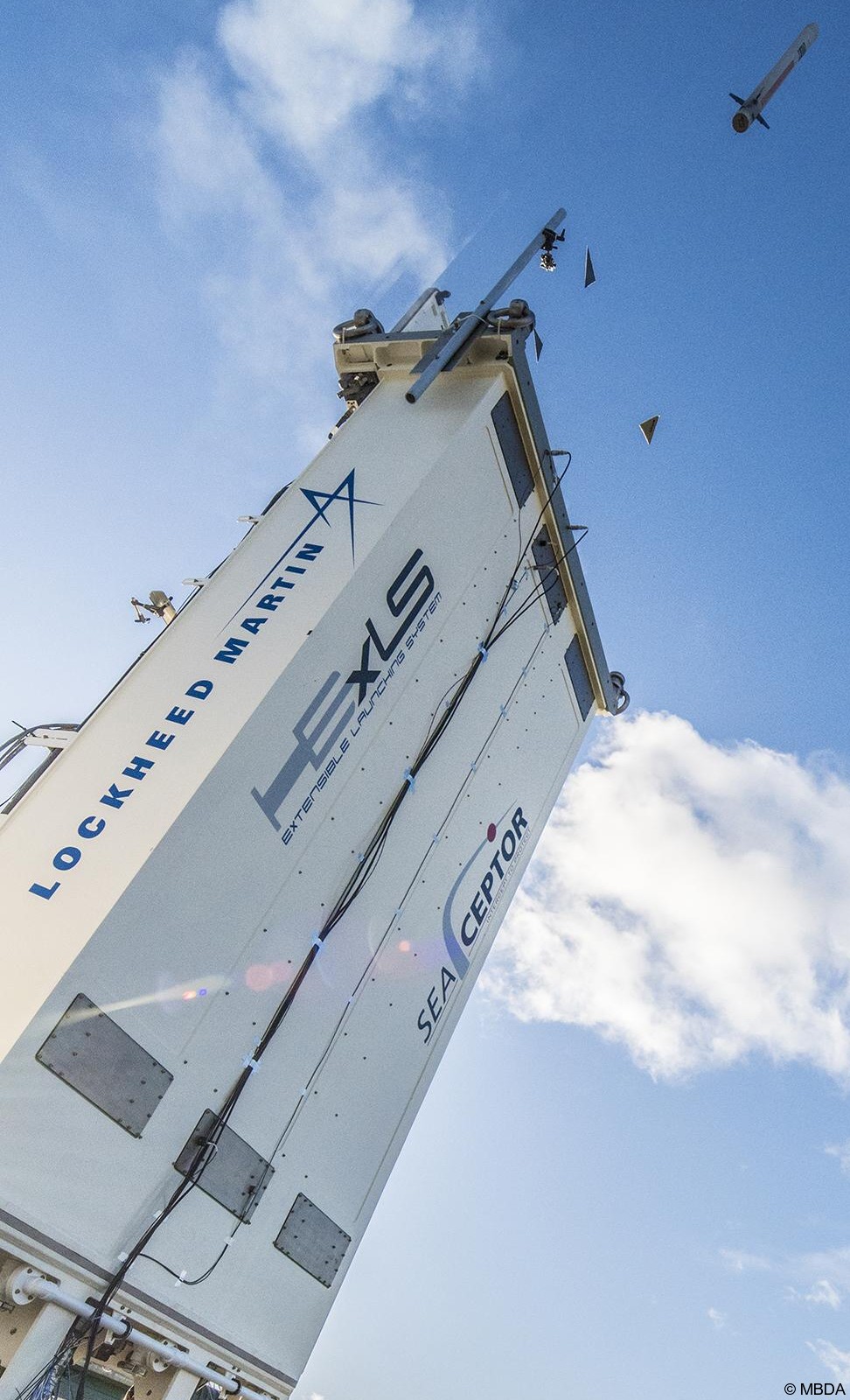 Extensible Launching System (ExLS) 3-Cell Stand Alone Launcher for quad-packed CAMM missiles 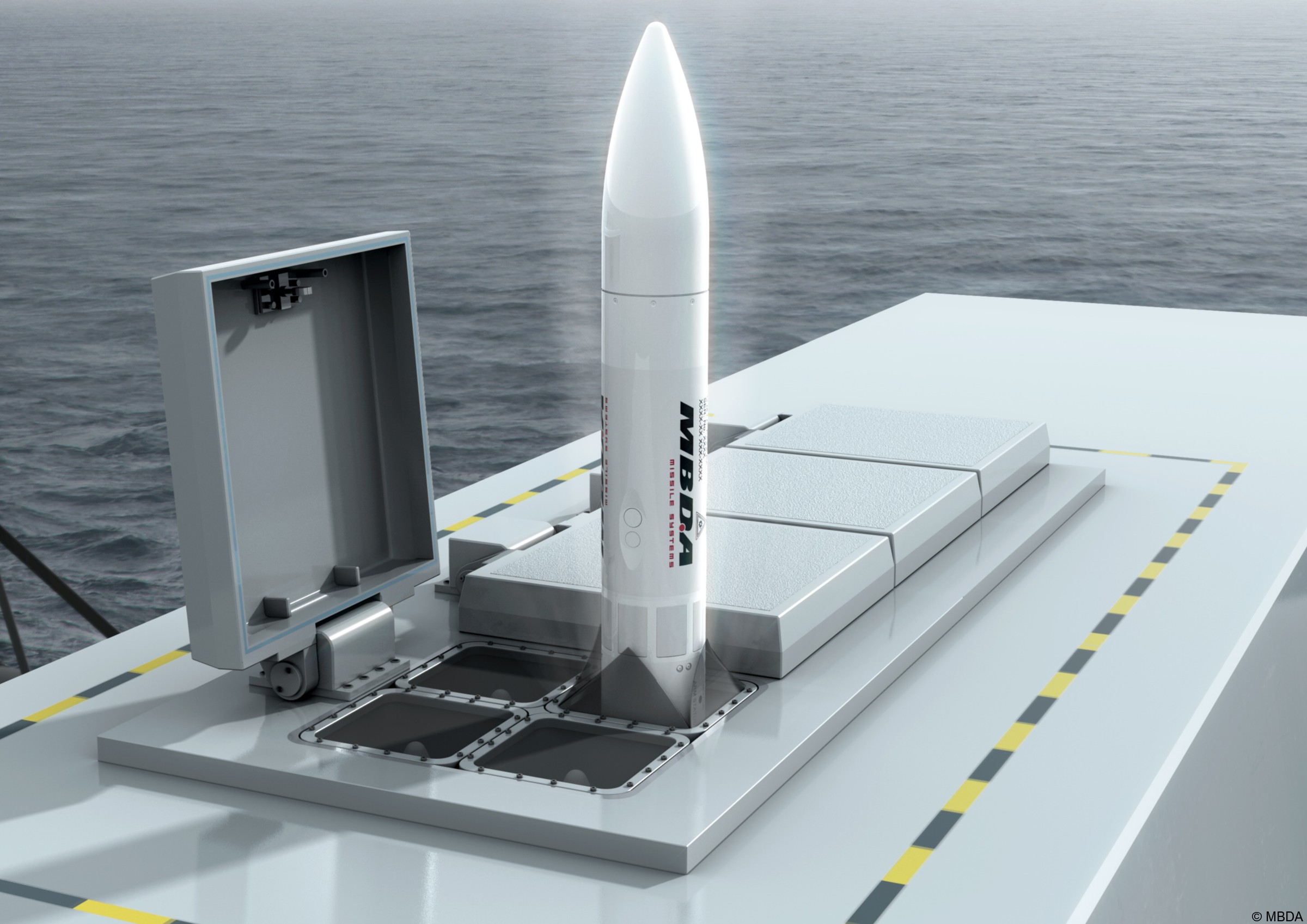 Extensible Launching System (ExLS) 3-Cell Stand Alone Launcher for quad-packed CAMM missiles 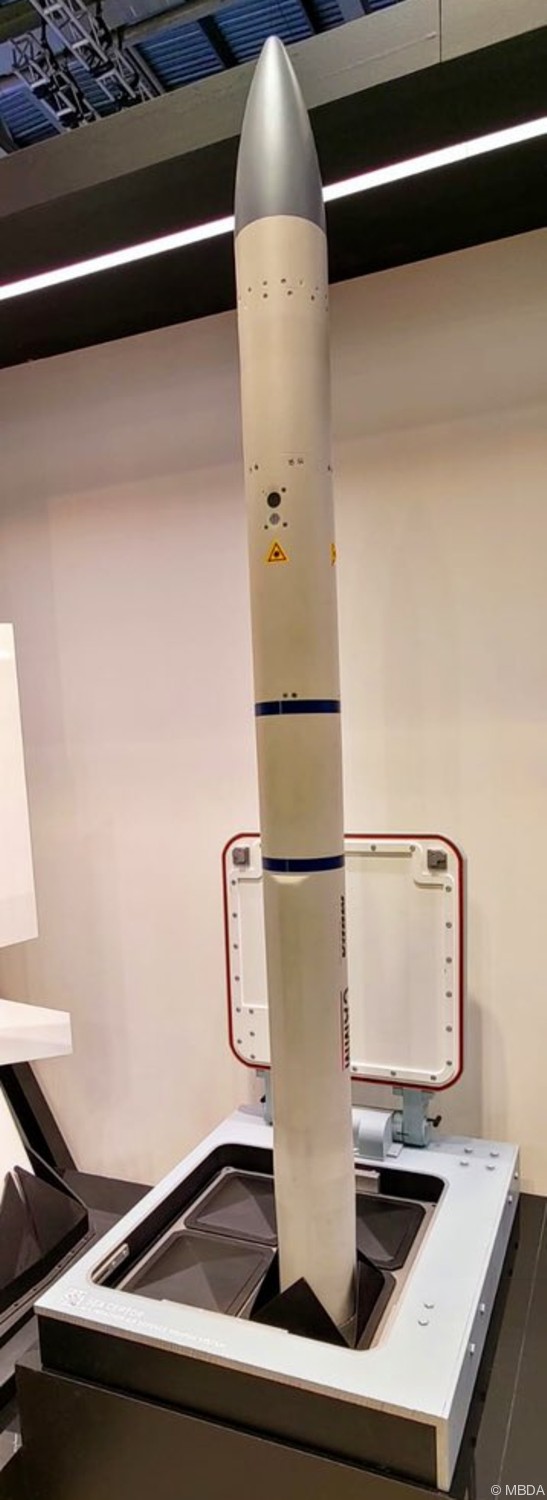 Extensible Launching System (ExLS) 3-Cell Stand Alone Launcher for quad-packed CAMM missiles CAMM-MR 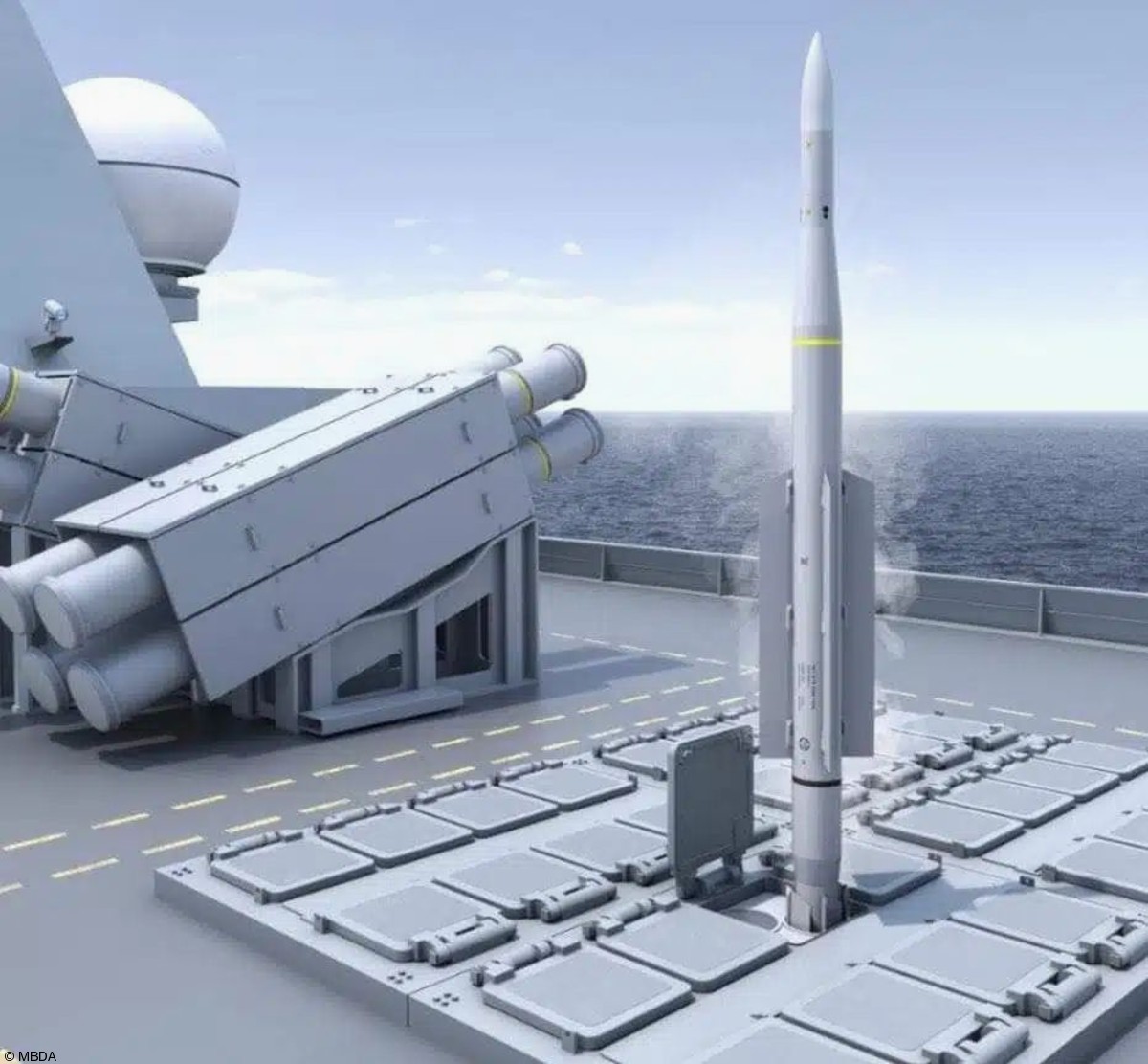 two CAMM-MR (Medium-Range) missiles loaded into a single Mark 41 cell making CAMM-MR the first munition of this range class capable of being dual-packed into the Mark 41 Vertical Launching System, enabling 16 missiles to be carried by a single Mk 41 eight-cell launch module Land Ceptor / CAMM EMADS 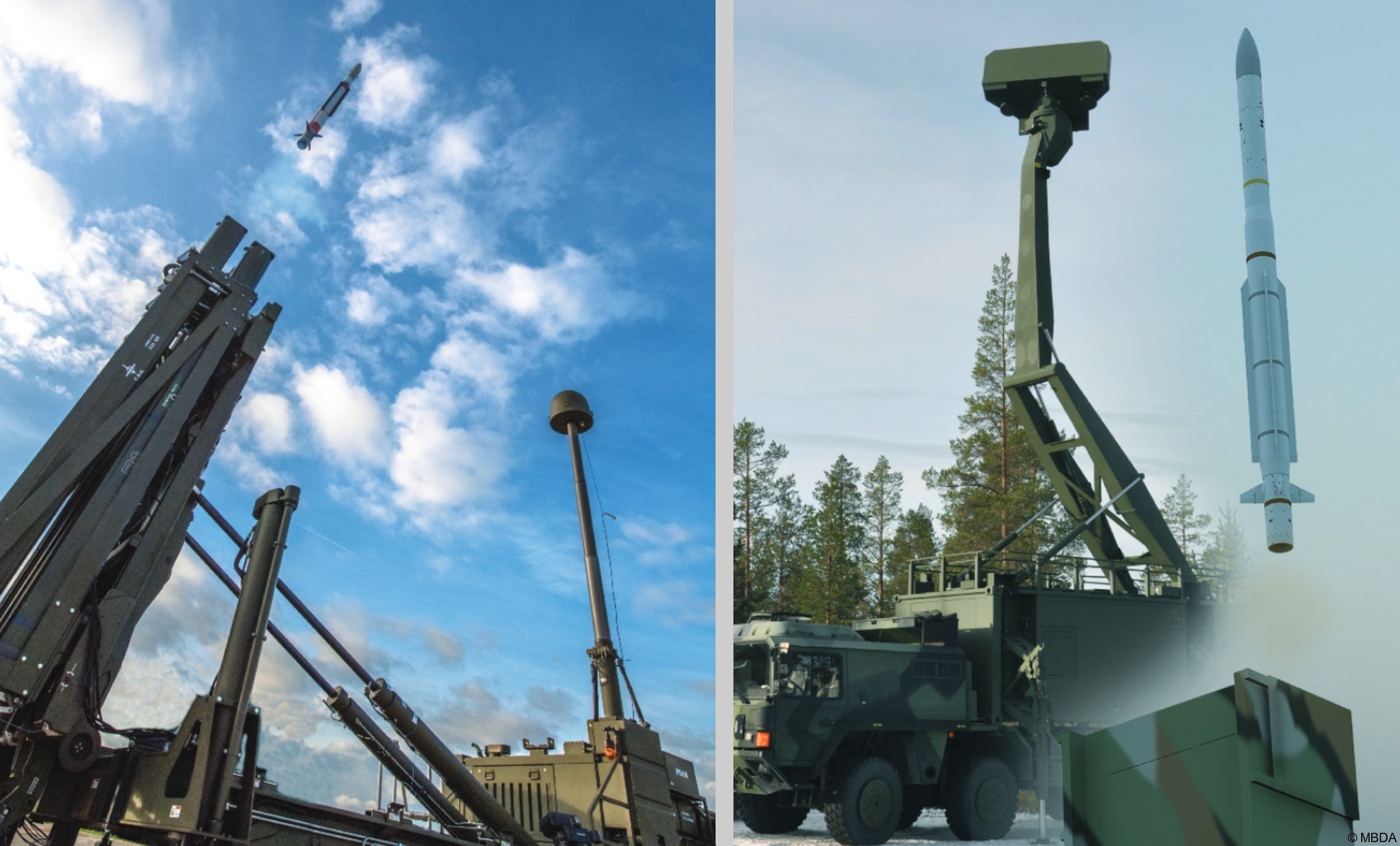 Land Ceptor Ground-based Air Defence System The land application of CAMM is marketed as the 'Enhanced Modular Air Defence Solutions' (EMADS) package or 'Land Ceptor' 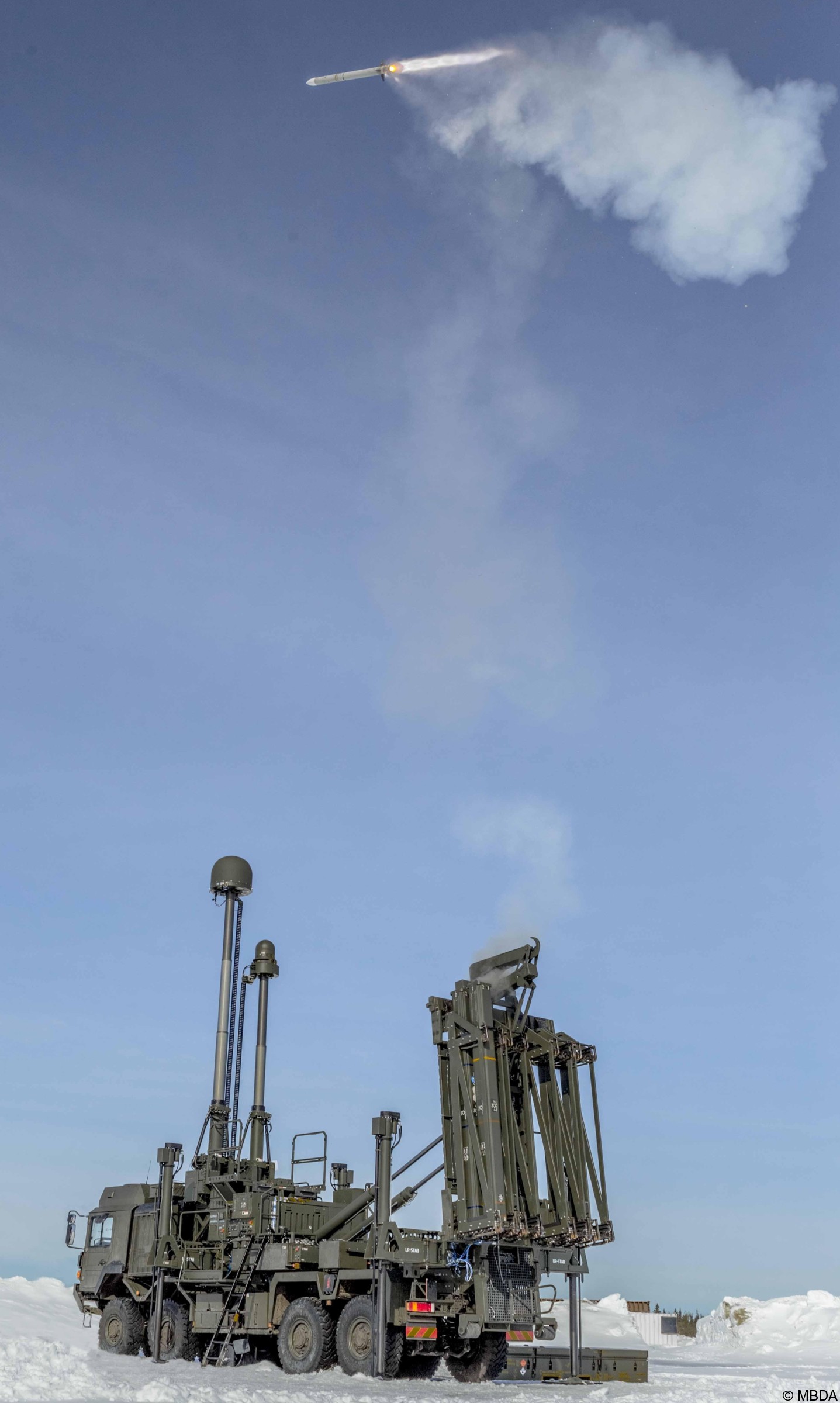 Land Ceptor Ground-based Air Defence System 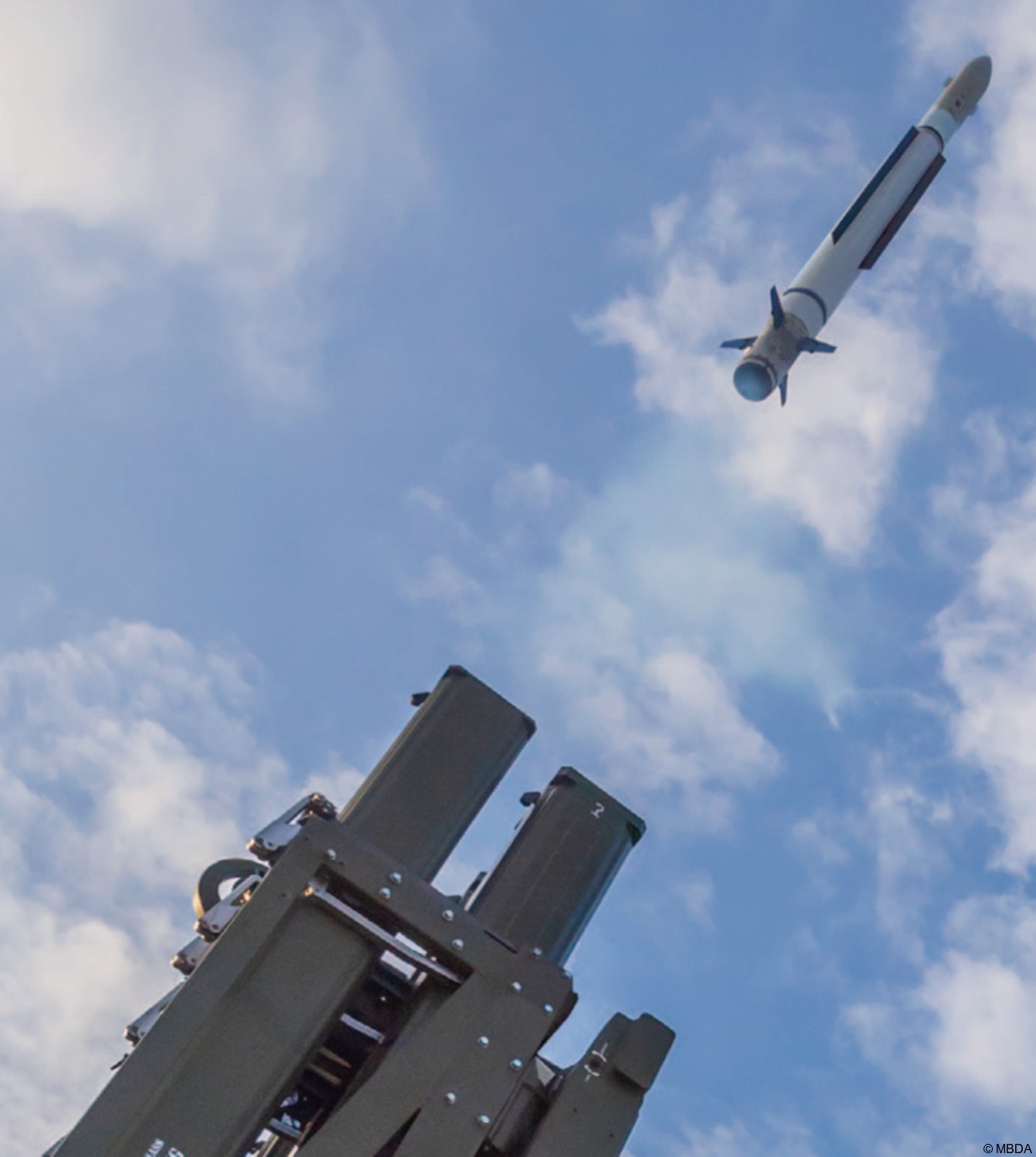 Land Ceptor Ground-based Air Defence System |
|
|
seaforces.org
|
Weapon Systems
start page
| |